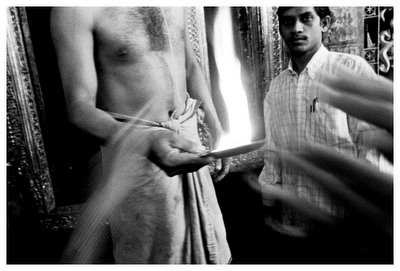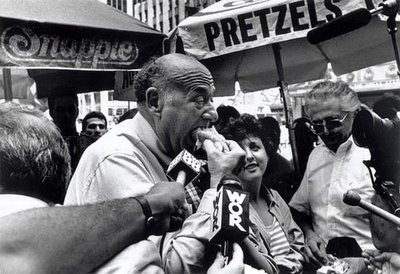
Climbing 614 steps, chisled into the side of a granite mountain, renowned as one of the holiest Jain pilgrimage sites, in Sravanabelagola, India, I photographed with my Leica M6, 28mm lens and TriX-400 speed film, an elderly woman being carted up the hill by four men. Talk about having an 'aura'. The face of the man, in the extreme right corner, never came out. It's blurred and has no definition. Everything else in the picture is in focus and has detail. Strange, considering that many of the men who carry pilgrims up this holy shrine, are mistics and have inhabited Sravanabelagola since the third century in honour of Lord Buhubali, who stands upon the summit of the mountain, in a colossal stone statue, in the heart of the Karnataka state. Visit incredibleindia.org for more on this incredible country.















